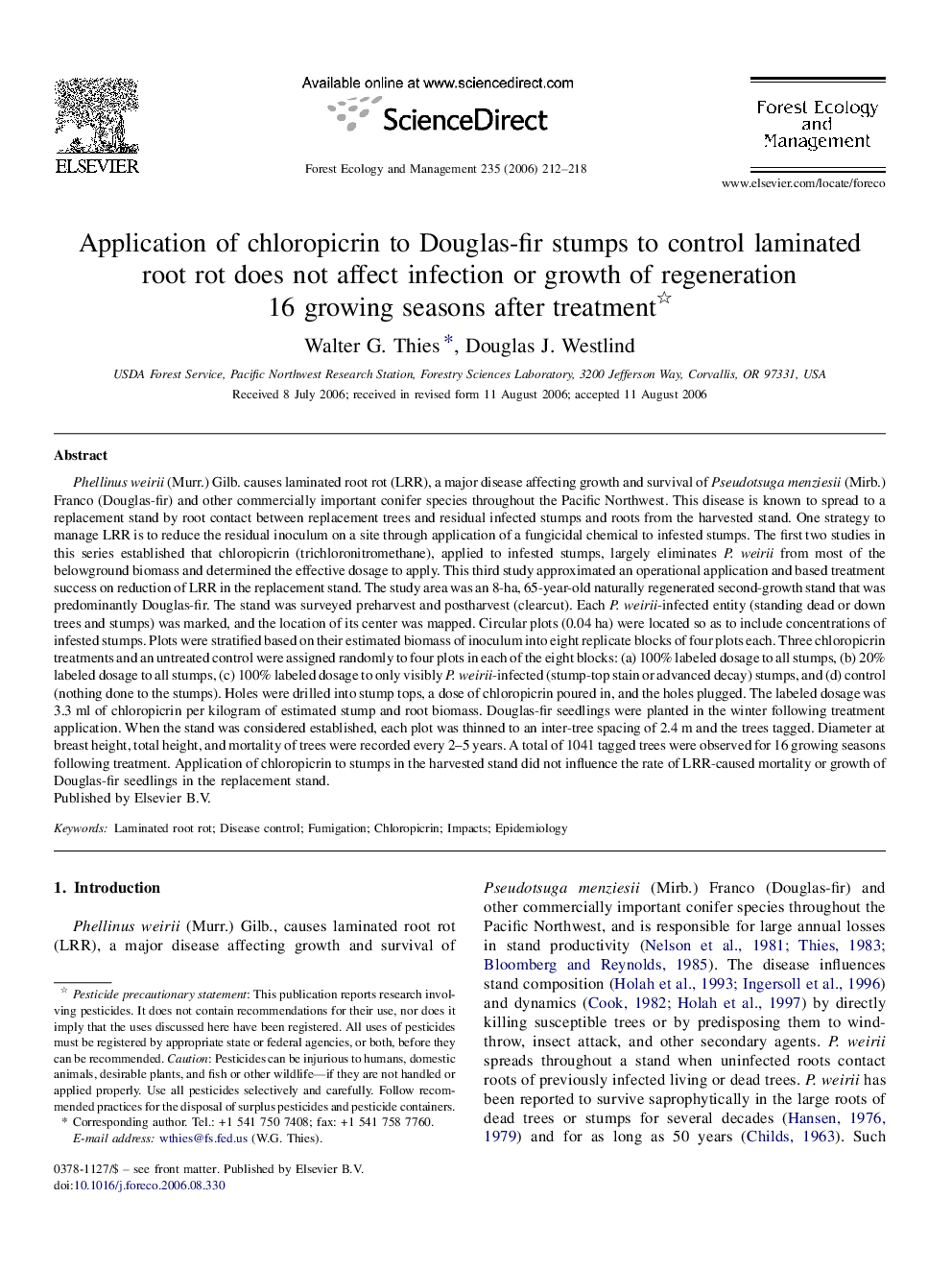| Article ID | Journal | Published Year | Pages | File Type |
|---|---|---|---|---|
| 90139 | Forest Ecology and Management | 2006 | 7 Pages |
Phellinus weirii (Murr.) Gilb. causes laminated root rot (LRR), a major disease affecting growth and survival of Pseudotsuga menziesii (Mirb.) Franco (Douglas-fir) and other commercially important conifer species throughout the Pacific Northwest. This disease is known to spread to a replacement stand by root contact between replacement trees and residual infected stumps and roots from the harvested stand. One strategy to manage LRR is to reduce the residual inoculum on a site through application of a fungicidal chemical to infested stumps. The first two studies in this series established that chloropicrin (trichloronitromethane), applied to infested stumps, largely eliminates P. weirii from most of the belowground biomass and determined the effective dosage to apply. This third study approximated an operational application and based treatment success on reduction of LRR in the replacement stand. The study area was an 8-ha, 65-year-old naturally regenerated second-growth stand that was predominantly Douglas-fir. The stand was surveyed preharvest and postharvest (clearcut). Each P. weirii-infected entity (standing dead or down trees and stumps) was marked, and the location of its center was mapped. Circular plots (0.04 ha) were located so as to include concentrations of infested stumps. Plots were stratified based on their estimated biomass of inoculum into eight replicate blocks of four plots each. Three chloropicrin treatments and an untreated control were assigned randomly to four plots in each of the eight blocks: (a) 100% labeled dosage to all stumps, (b) 20% labeled dosage to all stumps, (c) 100% labeled dosage to only visibly P. weirii-infected (stump-top stain or advanced decay) stumps, and (d) control (nothing done to the stumps). Holes were drilled into stump tops, a dose of chloropicrin poured in, and the holes plugged. The labeled dosage was 3.3 ml of chloropicrin per kilogram of estimated stump and root biomass. Douglas-fir seedlings were planted in the winter following treatment application. When the stand was considered established, each plot was thinned to an inter-tree spacing of 2.4 m and the trees tagged. Diameter at breast height, total height, and mortality of trees were recorded every 2–5 years. A total of 1041 tagged trees were observed for 16 growing seasons following treatment. Application of chloropicrin to stumps in the harvested stand did not influence the rate of LRR-caused mortality or growth of Douglas-fir seedlings in the replacement stand.
